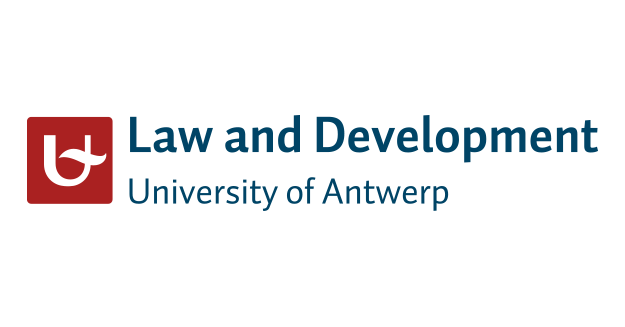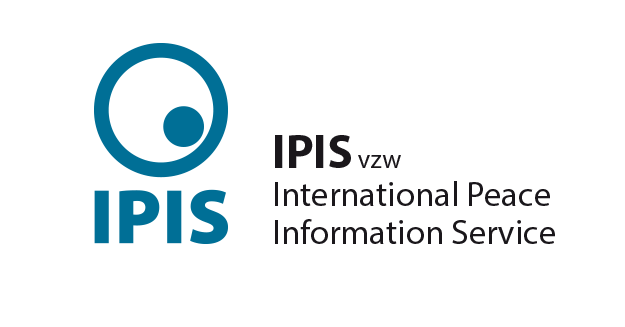9 Klachtenmechanismen op operationeel niveau
Waar zijn deze regels en richtlijnen te vinden?

Deze pagina bevat twee soorten bronnen. Ten eerste de bronnen die op de vorige pagina’s ("wat?", "waarom?" en "hoe?”) expliciet worden vermeld, met de bijbehorende hyperlinks voor verdere raadpleging. Ze zijn gerangschikt naar de instelling die ze heeft vrijgegeven. Ten tweede is er een bibliografie met geraadpleegde bronnen die gebruikt werd om het instrument op te stellen. Deze bibliografie kan nuttig zijn voor de gebruiker voor nader onderzoek over het onderwerp.
- Verenigde Naties (VN)
-
Van Boven Bassiouni Principles: UN GA on the Basic Principles and Guidelines on the Right to a Remedy and Reparation for Victims of Gross Violations of International Rights Law and Serious Violations of International Humanitarian Law, Res.60/147: UN Doc. A/RES/60/147 (21/06/2006).
UN OHCHC: The Corporate Responsibility to Respect Human Rights: An Interpretive Guide. (2012)
United Nations Development Programme (UNDP): Stakeholder response mechanism: overview and guidance
UNEP Stakeholder Engagement Manual Volume 2: The Practitioner's Handbook on Stakeholder Engagement (2005)
UNRWA framework for accountability to affected populations
UNHCR (VN Vluchtelingen organisatie) 10 steps to setting up an effective feedback mechanism
The IASC Commitments on Accountability to Affected Populations (CAAP)
- Organisatie voor Economische Samenwerking en Ontwikkeling (OESO)
-
The OECD Watch Guide to the Guidelines
Filing OECD Guidelines complaints
Guide to the OECD guidelines for multinationals enterprises’ complaint procedure
- Klachtenmechanismen van internationale financiële instellingen
-
CAO Grievance mechanisms toolkit
CAO A Guide to Designing and Implementing Grievance Mechanisms for Development Projects (2008)
The World Bank Inspection Panel
- Europese Unie (EU)
-
Sectoral guides from the the Institute for human rights and business and Shift
ICT sector guide on implementing the UN guiding principles on business and human rights
Oil and gas sector guide on implementing the UN guiding principles on business and human rights
- België: Toegang tot remediëring
-
FIDO: Brochure 'Toegang tot remediëring in België' (2017)
- Richtlijnen van niet-statelijke actoren
-
Transparency International: Complaint mechanisms reference guide for good practice (2016)
AA1000 Framework on Stakeholder Engagement Standard (2015)
The Smart Campaign: How to Design a Complaints Mechanism Overview: A Tool for Financial Institutions (2014)
Earth rights and SOMO Community-Driven Operational Grievance Mechanisms discussion paper for a new model (2015)
SOMO: How to use the UN Guiding Principles on Business and Human Rights in company research and advocacy (2012)
SOMO and Earth Rights: Community-Driven Operational Grievance Mechanisms discussion paper for a new model (sd)
SOMO: The Patchwork of Non-Judicial Grievance Mechanisms Addressing the limitations of the current landscape (2015)
Remediation and grievance mechanisms
The case map of the Business and human rights resource centre
Ethical Trading Initiative: NGO Leadership in Grievance Mechanisms and Access to Remedy in Global Supply Chains (2017)
CSR Europe
The MOC-A: Management of Complaints Assessment (2016)
- Richtlijnen van buurlanden
-
UN Global Compact The Netherlands and The Shift : Doing business with respect for human rights: Chapter 3.8 Remediation and grievance mechanisms ‘Early warning, effective solutions’
- Referenties
-
- Daniel C., Wilde-Ramsing J., Genovese K., Sandjojo V. (2015) “Remedy Remains Rare: an analysis of 15 years of NCP cases and their contribution to improve access to remedy for victims of corporate misconduct”. OECD Watch, www.oecdwatch.org Amsterdam - The Netherlands
- de Jonge, A. (2011). Transnational corporations and international law: bringing TNCs out of the accountability vacuum. Critical perspectives on international business, 7(1), 66-89.
- EU Agency for Fundamental Rights and Council of Europe (EU FRA and CoE) (2016) Handbook on European law relating to access to justice. Luxemburg.
- EU Agency for Fundamental Rights -FRA- (2017) Improving access to remedy in the area of business and human rights at the EU level. Opinion of the EU Agency for Fundamental Rights, FRA Opinion – 1/2017 [B&HR].
- International Commission of Jurists (2006) The Right to a Remedy and to Reparation for Gross Human Right s Violations – A Practitioners’ Guide.
- Kaufman, J., & McDONNELL, K. (2016). Community-driven operational grievance mechanisms. Business and Human Rights Journal, 1(1), 127-132
- OECD Watch (2013) “Calling for Corporate Accountability: A Guide to the 2011 OECD Guidelines for Multinational Enterprises: A government-backed international corporate accountability mechanism”. http://www.oecdwatch.org/publications-en/Publication_3962
- OECD (2016) Implementing the OECD Guidelines for Multinational Enterprises: The National Contact Points from 2000 to 2015. http://mneguidelines.oecd.org/OECD-report-15-years-National-Contact-Points.pdf
- OECD Watch (2018) The State of Remedy under the OECD Guidelines Understanding NCP cases concluded in 2017 through the lens of remedy. https://www.oecdwatch.org/publications-en/Publication_4429
- Rees, C., & Vermijs, D. (2008). Mapping grievance mechanisms in the business and human rights arena. Corporate social responsibility Initiative.
- Rees, C. (2011). Piloting principles for effective company-stakeholder grievance mechanisms: A report of lessons learned. Corporate Social Responsibility Initiative, John F. Kennedy School of Government, Harvard University.
- Donaghey, J., & Reinecke, J. (2018). When industrial democracy meets corporate social responsibility—A comparison of the Bangladesh Accord and Alliance as responses to the Rana Plaza Disaster. British Journal of Industrial Relations, 56(1), 14-42.
- Ruggie, J. (2011). Report of the special representative of the secretary-general on the issue of human rights and transnational corporations and other business enterprises: Guiding principles on business and human rights: implementing the united nations ‘protect, respect and remedy’ framework. Netherlands Quarterly of Human Rights, 29(2), 224-253.
- Ruggie J.G. and Nelson T. (2015). “Human Rights and the OECD Guidelines for Multinational Enterprises: Normative Innovations and Implementation Challenges.” Corporate Social Responsibility Initiative Working Paper No. 66. Cambridge, MA: John F. Kennedy School of Government, Harvard University
- Scheltema, M. (2013). Assessing the effectiveness of remedy outcomes of non-judicial grievance mechanisms. DQ, 190.
- Siddiqui, J., & Uddin, S. (2016). Human rights disasters, corporate accountability and the state: Lessons learned from Rana Plaza. Accounting, Auditing & Accountability Journal, 29(4), 679-704.
- The International Corporate Accountability Roundtable (ICAR), CORE and The European Coalition for Corporate Justice (ECCJ) (2014) The EU’s Business: Recommended actions for the EU and its Member States to ensure access to judicial remedy for business-related human rights impacts.
- UN OHCHR Accountability and Remedy Project (2016a) Improving accountability and access to remedy for victims of business-related human rights abuse Report of the United Nations High Commissioner for Human Rights UN HRC A/HRC/32/19 and A/HRC/32/19/Add.1
- UN OHCHR Accountability and Remedy Project (2016b) Illustrative examples for guidance to improve corporate accountability and access to judicial remedy for business-related human rights abuse Companion document to A/HRC/32/19 and A/HRC/32/19/Add.1
- UN OHCHR (2017) Access to remedy for business-related human rights abuses: A scoping paper on State-based non-judicial mechanisms relevant for the respect by business enterprises for human rights: current issues, practices and challenges. Accountability and Remedy Project II
- Weissbrodt, D. (2014). Human rights standards concerning transnational corporations and other business entities. Minn. J. Int'l L., 23, 135.
- Wilson, E., & Blackmore, E. (2013). Dispute or Dialogue: Community perspectives on company-led grievance mechanisms. International Institute for Environment and Development (IIED): London. See pubs. iied. org/16529IIED. html.




